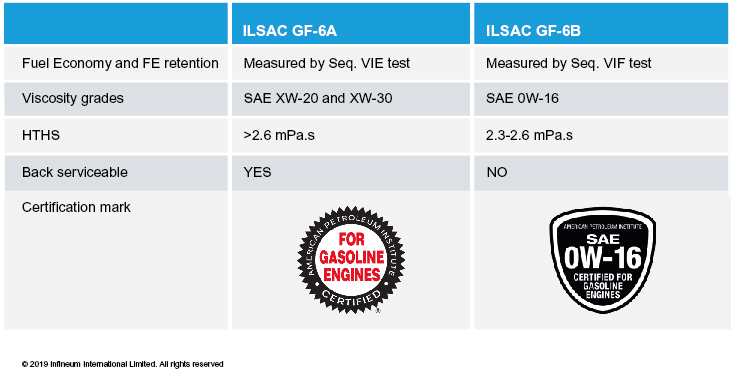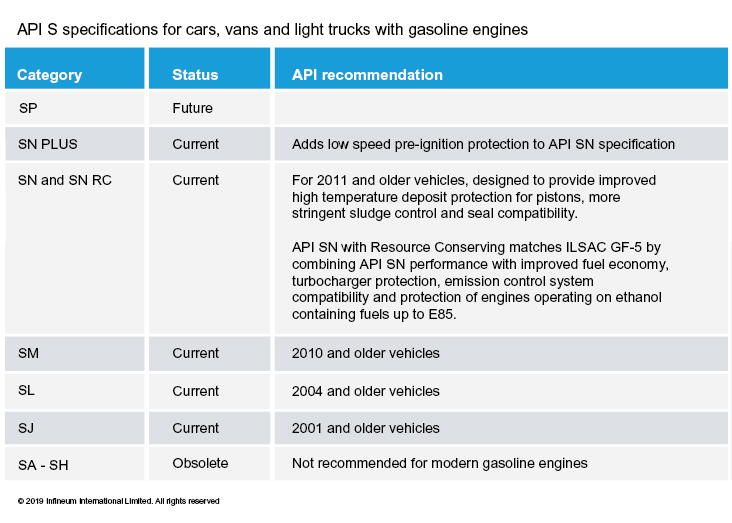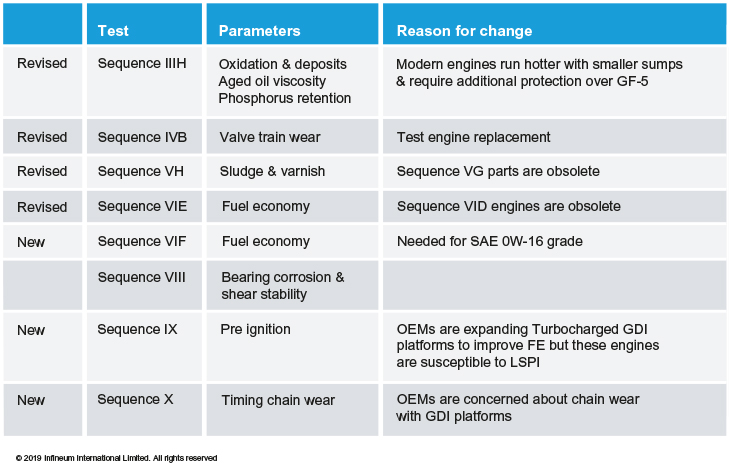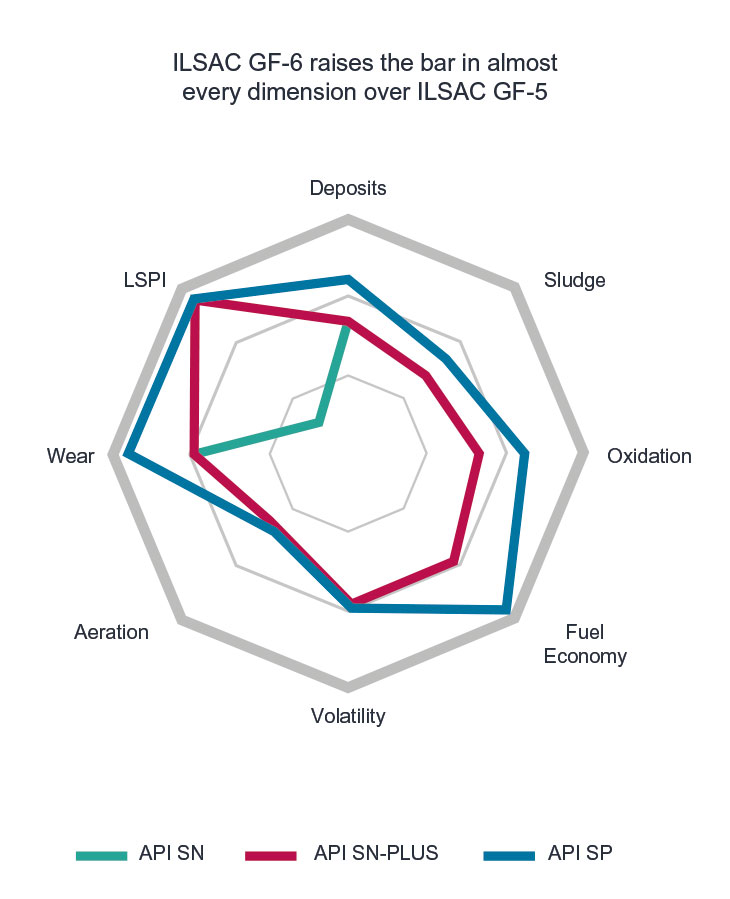Passenger cars
Severe hybrid engine oil testing
20 May 2025
14 January 2020
The drivers, the development and the need to communicate its value

It might have been eight years in the making, but ILSAC GF-6 is now just a few months away, with first allowable use set for May 1 2020. Jeff Thompson, Infineum Executive Market Manager for Lubricant Additives in North America, takes time out to revisit the drivers behind the upgrade, to explore the challenges that remain and assess the opportunities that may lie ahead.
While most suppliers are well underway with ILSAC GF-6 product deployment, now seems a good time to answer some of the questions we are often asked about why we needed the new category, what the specification delivers to customers and the specifics of what oil marketers may still need to do before the mandatory use date. As an industry, we can get so wrapped up in the process of a specification upgrade, we may forget to realise and convey the value it brings into passenger car motor oils.
The ILSAC GF-6 passenger car engine oil category development was driven by a combination of regulatory and performance needs.
OEMs are striving to produce cleaner, more fuel efficient internal combustion engine platforms. At the same time car drivers expect improved performance from their vehicles. To meet these challenges, OEMs continue to introduce new hardware and vehicle control systems. We are seeing engine downsizing with direct injection, increased turbocharging, friction reduction, along with advancements in aftertreatment and combustion technology. All these changes rely on the ability of higher quality engine oils to deliver sufficient hardware protection and prevent operational issues, while contributing towards improving fuel economy particularly through the use of lighter viscosity grades. New lubricant performance challenges have been set, and the upcoming API ILSAC GF-6 and SP specifications go a long way to setting the standards to meet them.
ILSAC GF-6 defines a new performance level of engine oils for spark-ignited internal combustion engines.
In addition, the upgrade ensures the tests used are relevant to the latest hardware, measure real-world issues and mimic real-world conditions.
ILSAC GF-6 was requested in 2012 and, at the time, the launch was scheduled for 2016. However, this has been a very complex process, which has involved the replacement of four engine tests and the introduction of three new ones – a record amount of change for any category development. Delays have occurred in test readiness due to multiple part changes, shifts in severity during development and the complexity of test procedure creation and standardisation. In addition, in the modern engines used for the development of engine tests, the hardware and engine control management interaction is much more complex, which means decoupling them to create the engine test was a key step.
Industry has worked hard to finalise all the work and the specification is approved with first allowable use date set for 1 May 2020.
The development of new tests for industry specifications - both ILSAC GF-6 and ACEA in Europe - has consumed a huge amount of industry resource and has contributed to the delay in their introduction. All stakeholders are keen for an improved oil category development process to reduce complexity, time, and funding. API is currently sponsoring the Lubricants Specification Development Review Group to investigate changes in these processes.
Back in 2010, ILSAC GF-5, introduced a number of performance enhancements over GF-4 in areas including high temperature deposit protection, fuel economy, aftertreatment and seals compatibility, sludge control and to protect engines using ethanol up to E85.
API SN PLUS was introduced on 1 May 2019 due to the delays in the development of ILSAC GF-6. It came as a result of requests from OEMs for a supplement to the SN category to ensure the adequate protection of current vehicles for a potential problem that was not being addressed fast enough. It introduced the Sequence IX test to enhance low-speed pre-ignition (LSPI) protection and often shifted engine oil formulations to a more magnesium-rich detergent system with less calcium detergent.
ILSAC GF-6 looks to include those improvements for LSPI protection but also adds other performance improvements. By including new limits and new tests, it delivers improved deposits, wear and efficiency as OEMs push the engine design envelope for performance, longevity and fuel economy. The new category also addresses two specific operational issues by providing LSPI protection (consistent with API SN PLUS) and a newly added element of timing chain wear protection. In addition to better fuel economy across today’s ILSAC viscosity grades, ILSAC GF-6 establishes a specification that now enables lower viscosity SAE 0W-16 oils to be introduced to support fuel economy improvement with an ILSAC certification mark.
The use of lower viscosity engine oils is one way to help reduce fuel usage in passenger cars. However, it is essential that these thinner oils also deliver engine durability and that we avoid the misapplication of these oils into vehicles not designed for such low viscosities.
To enable OEMs to introduce oils with viscosity grades of less than SAE 0W-20, ILSAC has proposed GF-6 as two separate sub-categories ILSAC GF-6A and ILSAC GF-6B.
The latter is a new performance level with the same requirements as ILSAC GF-6A, except for fuel economy, but at a lower viscosity level.
 Images courtesy of API
Images courtesy of API
The trademark registration of the new so called ILSAC GF-6B “shield” certification mark is underway. From May 1 2020, licensed oils will be able to display API SP in the donut and use the “shield and “starburst”. In the meantime, although marketers may claim their oil meets the new standards on labels and materials the use of the new logos will not be permitted before May 1 2020.
During the update of ILSAC GF- categories, the prior category is only valid over a one year transition period. This means that GF-1 to GF-4 are obsolete and GF-5 will no longer be recommended after May 1 2021. However, the API specification only becomes obsolete when it is no longer required or when the tests become unavailable. This has been the case because the ILSAC specification is specifically designed to meet the emission and fuel economy regulations for North American vehicles. OEMs would prefer that all vehicles are upgraded to the latest lubricant, and therefore recommend the current oil, which is back serviceable to the older engines. The API S specifications are used globally and some of the older S specifications are still used in developing countries and with engines not requiring the current level of fuel economy or durability.

The new GF-6 category contains three new tests and revisions to four others, with only the Sequence VIII remaining unchanged.

The key challenge will be in delivering the required levels of cleanliness, wear and pre-ignition protection to ensure hardware durability and, at the same time, delivering reduced friction for fuel economy improvements.
The new ILSAC GF-6 engine oil specification is a noticeable upgrade from GF-5, adding performance elements in almost every dimension to help protect modern engines. There is a real opportunity here to convey the value of these oils that offer improved fuel economy, better engine durability along with LSPI and wear protection; ILSAC performance requirements that are now essential for the latest engines.

For example, many end users are operating vehicles that use lower viscosity lubricants, have turbochargers and use a solid timing chain. However, very few drivers understand that LSPI can be an engine-damaging phenomenon from which modern engines need protection and that their oil matters for this. Few know that some oil formulations might provide better protection for timing chain wear than others, preventing a check engine light on their vehicle. And fewer still might appreciate that doing all of that while providing excellent fuel economy performance is a hallmark of an outstanding ILSAC GF-6 oil.
The ability to convey the benefits of ILSAC GF-6 effectively could be a significant factor in future oil selection.
First allowable use is on 1 May 2020. However, we could see product in bottles before this date since customers can register oils with GF-6 data from January 2020, but cannot claim ILSAC GF-6A/API SP or GF-6B/API Resource Conserving (RC) until May.
The North American passenger car engine oil market is expected to transition quite quickly to ILSAC GF-6 in 2020.
With this approach, API and ILSAC allow some flexibility to facilitate early or late rollovers. The exact timing may depend on strategies deployed by oil marketers and customer desires.
Most oil marketers are well underway with their ILSAC GF-6 development programs and are working with additive company partners to optimise their products around the new tests, test conditions and revised limits. In addition, as both the number of different base stocks and viscosity grades in use continue to grow, requalification work is needed to ensure oil marketers can continue to supply the breadth of products required.
The 12-month mandatory waiting period, which started on May 1 2019, should provide sufficient time to set up new supply chains and create the literature and labels needed to support new products. During the remainder of this period, Infineum will continue to help oil marketers to ready their new, more robust, ILSAC GF-6, API SP and API SP-RC products for timely deployment into the market.
Sign up to receive monthly updates via email